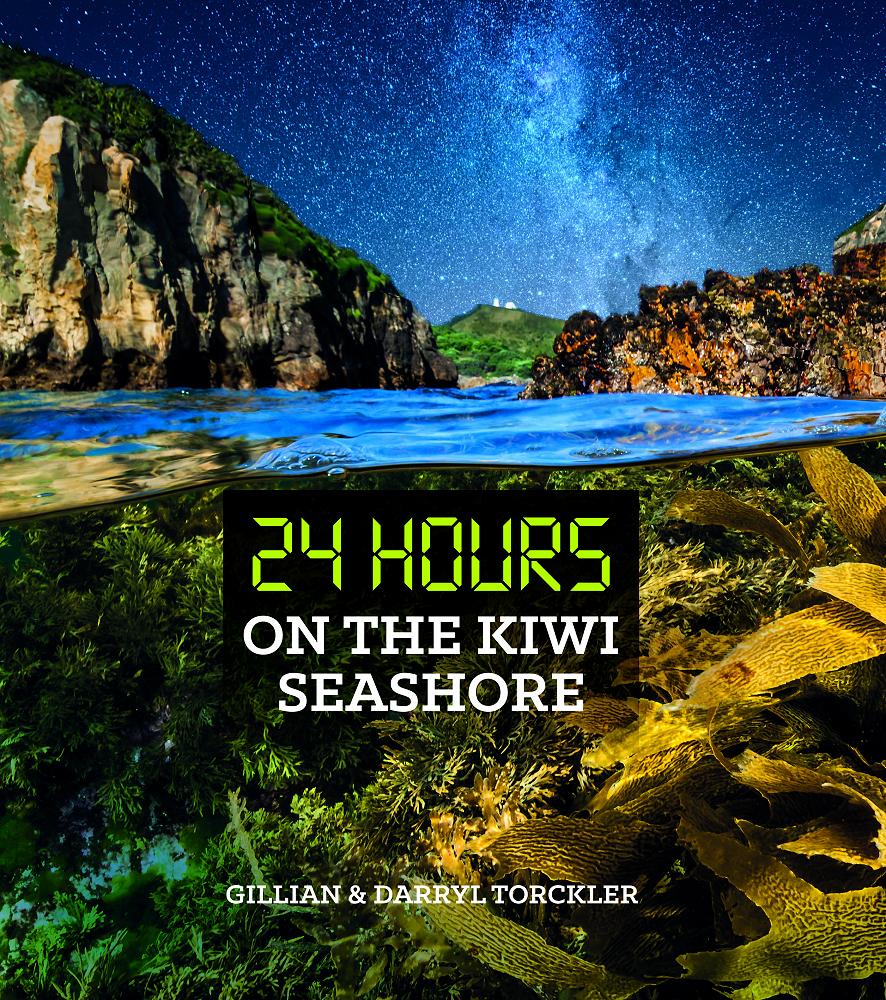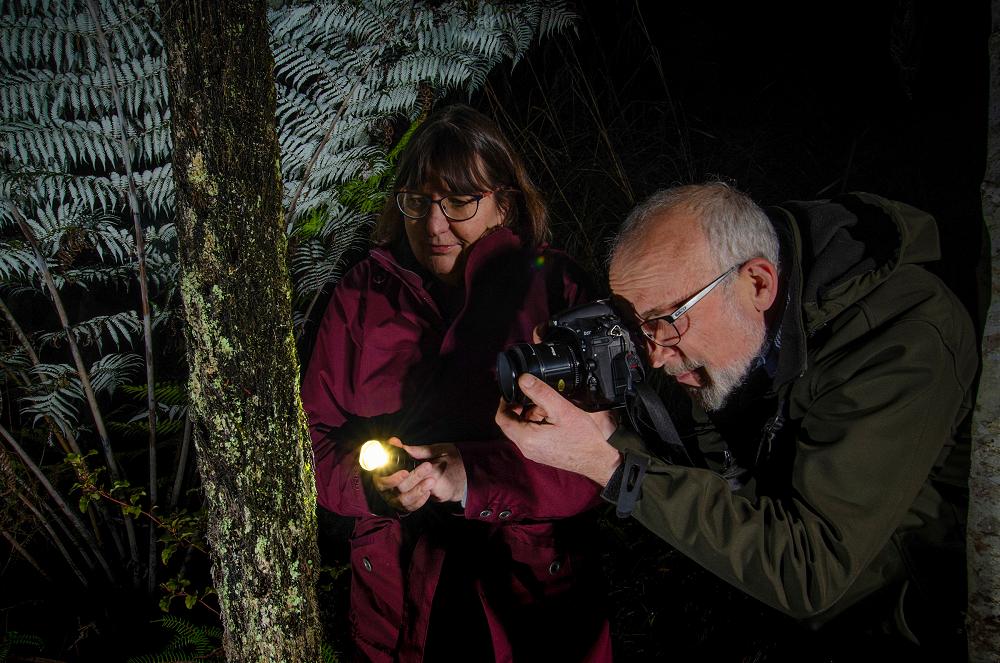
Check Out an Author: Gillian Torckler
Gillian Torckler has produced several children's books about the natural world with her photographer husband Darryl Torckler.
Gillian Torckler's first book was published in 1999 and since then she has published 19 books, mostly children's non-fiction. Her latest book, My Name Is Henry Fanshaw, tells the historical tale of the teddy bear that accompanied the 75th bomber squadron during World War Two.
Gillian has also written two picture books that feature the natural world or historic events; they could be described as creative non-fiction. Her picture books are expertly illustrated by Bruce Potter and Adele Jackson, but she says she feels incredibly lucky to be able to collaborate with her husband, Darryl Torckler, who is an amazing nature photographer and who has illustrated all of her non-fiction books to date. Their most recent collaborations are 24 Hours on the Kiwi Seashore and 24 Hours in the Kiwi Bush.
Gillian recently moved to Dunedin for her paying job, which is teaching and researching at the Otago Medical School.
I put some questions to Gillian about her books and the writing process.
Q: When did you start writing? And, did it take a long time before your first book was published?
A: I started writing travel articles with a particular focus on water activities in 1995. These were collaborations with my husband, photographer Darryl Torckler, and were published in New Zealand newspapers and magazines. In 1998, we were approached by New Holland Publishers and asked if we would like to create an illustrated book of underwater photography from New Zealand locations. Soon after Underwater Wonders of New Zealand was published, our first son was born and we started to take an interest in children’s books. We were surprised how few featured high quality nature photography, so we began to write our own. Our first children’s book, Kiwi Adventures: Snorkelling was published in 2002.
NB reviewed Gillian's book 24 Hours on the Kiwi Seashore in the Mar/Apr 2021 issue.

Q: Have you got a favourite age group you like to write for? For instance, do you start with an idea and then decide which audience level it is for?
A: I really don’t have a favourite group. It really depends what the idea is and who it is best suited to. For example, I wrote some books of rhyming poetry and guessing games for younger children that would never have worked for older readers. If I had to pick a group, it would be the 7-12 age group as they are often keen to read and learn about their world.
Q: You have written non-fiction for children and adults, and fiction for children. How do you approach writing differing genres?
A: I try to imagine the audience. Having nature-loving kids helped a lot. I have seen first-hand the things they love about the natural world and these are often different to what adults are fascinated by. But it’s important to remember that the parents or grandparents are often reading alongside the young person, so the book needs to satisfy them as well.
Q: Do you have a ritual you follow before you start writing?
A: I do a lot of research beforehand, but other than that no. Sometimes, I start by scribbling on a notepad, sometimes my phone, sometimes I email myself the start of a book. But I usually map the book out into the typical 32-page format before I really start writing. I need to know what will go on each page, especially if pages are linked (for non-fiction) or to help me get the pace of the book right.
Q: You have had a few very different books published in the last year and you have a day job. How do you manage to juggle all of your writing projects? Were you working on more than one book at the same time?
A: It’s not easy. Often the bulk of a first draft is done while I am on holiday. I can manage rewrites and research in the evenings alongside my paid job. When I am in the middle of a book, I try to write in the evenings or weekends. It was challenging in 2020 as I was dealing with proofs of one book, edits of another and rewriting a third. And none of them were at all alike. Thankfully, they were all with a single publisher who was very understanding.

Q: Your books for children about New Zealand's wildlife are illustrated by your husband Darryl's photography. Which comes first, the photos or the idea for a book?
A: Mostly the photographs come first and the experience that led to the photography. I am often in the field with Darryl when he is taking photographs - either finding subjects or holding lights, or simply sharing the natural world experience. So I have seen interesting animals and behaviours, and I know what is possible with photography. Sometimes I push him hard to get certain pictures, but if the picture isn’t possible, I change the story or animal in it.
Q: Of all your subjects (including fictional characters and creatures you've written about) which one would you most like to hang out with?
A: Henry Fanshaw. No question about it. That bear has attitude and has “lived” some incredible adventures. I like that he has touched many lives and continues to do so. Having an actual artefact to base a book on has been awesome.

You can find out more about Henry B. Fanshaw, the RNZAF's mascot here.
Q. Are there any particular books, or writers, that have influenced you and your writing?
A: I think I was totally inspired towards nature though through David Attenborough’s voice and eyes. And of course, National Geographic magazines that we had as children. The natural world is simply amazing, but few children get to see it as I have.
Q. What were some of your other favourite books, or writers, when you were growing up?
A. When I was growing up I loved Laura Ingalls Wilder books, and although they may not be as popular now, I enjoyed reading about history. I still do to be honest. I also enjoyed E. B. White, especially Charlotte’s Web, and I think this was partly the animal world, but getting into the fantasy of their minds. When I was a teenager, I loved to read murder mysteries by Agatha Christie (I think I played too much Cluedo™ as a child!) and plays by Oscar Wilde.
Q: What are you reading right now?
A: Too many books to tell you. I have a pile of nonfiction and fiction on my bedside table.
Q: Tell us about any children’s or young adult books you have discovered and enjoyed as an adult?
A: Down the Back of the Chair by Margaret Mahy is perennial favourite, but I also really enjoy any picture book by Julia Donaldson. The rhythm is extraordinary in all of Julia’s books and Margaret’s as well. I am also a big fan of Jeannie Baker. The collage work in her books feature the natural world and how humans are changing it, which resonates with me.
Q: Have you got any new writing projects you are working on?
A: I’m working on a follow-up to My Name is Henry Fanshaw and another book about my great aunt who served in the Air Force during the Second World War. And a few other picture books and non-fiction ideas.
Q: Have you some advice for young writers about writing?
A: Write about what you love and care about. Your passion for the subject will shine through the words you use to describe it. Language should be exciting and evoke emotion. You do this naturally when you are excited and emotional about a subject.
